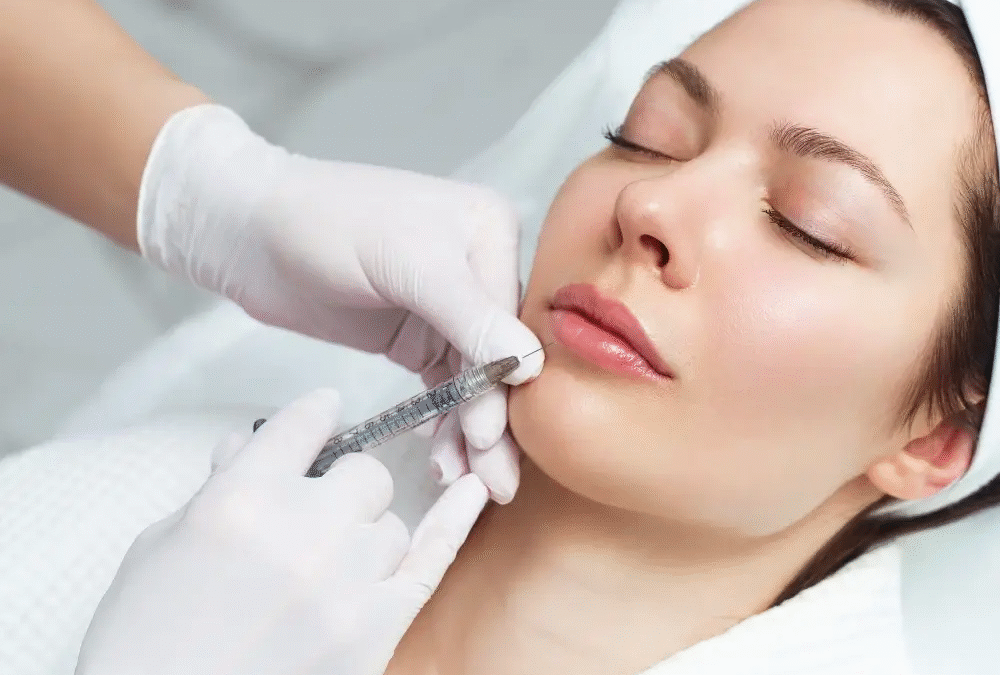
by laraibnaeem2005 | Sep 20, 2025 | Health
Lip enhancement has become increasingly popular with cosmetic treatments like Filler Injections in Dubai (حقن الفيلر في دبي) and Lip Fillers in Dubai (فيلر الشفاه في دبي). Face Fillers (الفيلر للوجه) offer a non-surgical approach to plump, shape, and rejuvenate lips. Understanding the treatment process, benefits, and aftercare is essential for achieving natural and lasting results while ensuring safety.
What Is Treatment and How It Works Importance of Treatment?
Fillers Injection in Dubai(حقن الفيلر في دبي) use substances like hyaluronic acid to restore volume and define the contours of the lips. The treatment:
-
Enhances lip fullness and symmetry
-
Smooths fine lines around the lips
-
Provides a subtle lift for a youthful appearance
Lip augmentation is important because it not only improves aesthetics but can also boost self-confidence. Properly administered fillers provide natural-looking results without the downtime of surgical procedures. The procedure is quick, typically under an hour, and effects are visible immediately, making it a convenient choice for many.
Types of Treatment:
Hyaluronic Acid Lip Fillers:
Collagen-Stimulating Fillers:
Combination Techniques:
-
Integrate multiple filler types for optimal contour and volume
-
Can target lip border, cupid’s bow, and corners simultaneously
-
Allows for customized, natural results
Injection Tools:
Preparation and Aftercare:
Preparation:
-
Avoid blood-thinning medications, alcohol, and supplements a few days prior
-
Inform about allergies or past reactions to fillers
-
Ensure lips and surrounding skin are healthy and free from infections
Aftercare:
-
Apply cold compress to reduce swelling or bruising
-
Avoid pressure, excessive lip movement, or massage immediately after
-
Refrain from heavy exercise or heat exposure for 24–48 hours
-
Monitor for unusual reactions and consult a specialist if needed
Proper preparation and aftercare help maintain results, minimize complications, and ensure a smooth recovery.
Ideal Candidate and How to Choose the Right Clinic:
Ideal Candidate:
-
Adults seeking fuller, well-defined lips
-
Those looking to correct asymmetry or volume loss
-
Individuals who understand the temporary nature of lip fillers and follow maintenance schedules
How to Choose the Right Clinic:
-
Look for experience with Face Fillers(الفيلر للوجه) and multiple lip techniques
-
Ensure high hygiene standards and proper handling of filler products
-
Access thorough consultation explaining filler types, risks, and expected results
-
Seek a clinic that offers post-procedure support for adjustments or touch-ups
Choosing the right clinic ensures precision, safety, and natural-looking outcomes.
Risks, Benefits, and FAQs:
Benefits:
-
Non-surgical, minimally invasive
-
Immediate improvement in volume and shape
-
Reversible with hyaluronic acid fillers if needed
-
Enhances self-confidence and facial harmony
Risks:
-
Mild swelling, redness, or bruising
-
Rare allergic reactions
-
Asymmetry if not injected properly
-
Temporary lumps or unevenness that usually resolve with massage or follow-up
FAQs:
Q: How long do lip fillers last?
A: Results typically last 6–12 months depending on filler type, metabolism, and lifestyle.
Q: Can lip fillers be combined with other facial treatments?
A: Yes, fillers can complement other Face Fillers (فيلر للوجه) or non-surgical procedures for overall facial rejuvenation.
Q: Is the procedure painful?
A: Most fillers include a mild numbing agent or can be combined with topical anesthesia for comfort.
Q: How many needles are usually needed for lips?
A: It varies depending on lip volume and desired shape, usually 1–3 syringes per session.
Conclusion:
Lip Fillers in Dubai (فيلر الشفاه في دبي) and Filler Injections in Dubai (حقن الفيلر في دبي) provide a safe, effective, and non-surgical option for lip enhancement. Understanding the types of fillers, preparation, aftercare, risks, and benefits ensures natural-looking results while minimizing complications. Selecting the right clinic and experienced injector helps achieve aesthetic goals and maintain confidence in your appearance. Proper care and knowledge make lip augmentation a reliable solution for those seeking fuller, youthful lips.
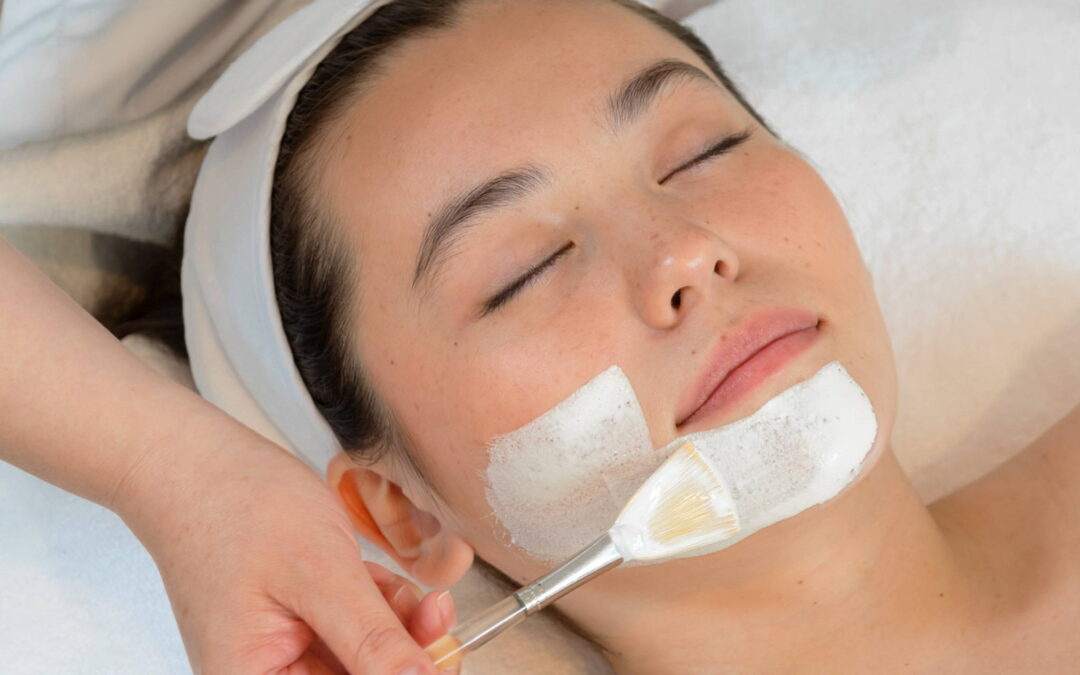
by laraibnaeem2005 | Sep 19, 2025 | Health
Facials have always been associated with glowing and rejuvenated skin, but chemical facials are often questioned for their safety. Many people want to know whether Facial treatment in Dubai(علاج الوجه في دبي) such as peels and exfoliating facials are suitable for everyone. With advanced options like Deep Facial Cleansing in Dubai (تنظيف الوجه المعمّق في دبي), Skin Resurfacing in Dubai (تسطيح البشرة في دبي), or innovative solutions like Glow Needle in Sharjah (إبرة النضارة في الشارقة), chemical facials have become more sophisticated than ever. Still, concerns about sensitive skin, conditions like rosacea, and aftercare often arise. This article explores whether chemical facials are safe, who can benefit, and what precautions are necessary when considering a Facial Treatment (علاج الوجه).
What Is A Chemical Facial And How It Works?
Chemical facials use specific acid-based solutions to exfoliate the skin, remove dead cells, and stimulate new growth. Unlike traditional facials, which rely on physical scrubs, chemical facials penetrate deeper into the skin.
-
Light peels focus on surface exfoliation, improving brightness.
-
Medium peels reach deeper layers, targeting acne scars and pigmentation.
-
Advanced options like Skin Resurfacing in Dubai (تسطيح البشرة في دبي) help renew skin texture and tone.
-
Specialized facials such as Rosacea Treatment in Dubai (علاج الوردية في دبي) or Dermatitis Treatment in Dubai (علاج التهاب الجلد في دبي) provide safe solutions for specific conditions.
The process usually includes cleansing, application of chemical solutions, neutralization, and hydration. The intensity varies depending on the skin type and goals of the treatment.
Importance Of Chemical Facial Treatments:
Chemical facials are important because they go beyond superficial cleansing.
-
They target deep pigmentation and uneven skin tone.
-
They improve fine lines and wrinkles, making them ideal for Facial Rejuvenation (تجميل الوجه).
-
They help with acne-prone skin by unclogging pores.
-
Options like Pre-Event Oxygen Facial (علاج الوجه بالأكسجين قبل الحدث) can boost instant glow before special occasions.
-
For damaged or injured skin, services like Emergency Treatment for Facial Injuries in Dubai (العلاج الطارئ لإصابات الوجه في دبي) ensure specialized care.
Chemical facials, when chosen carefully, can transform the skin, making them an essential part of modern Facial Treatments (علاجات الوجه).
Types Of Chemical Facials:
There are multiple types of chemical facials tailored to different needs:
-
Glycolic Acid Facials: Effective for dull and rough skin.
-
Salicylic Acid Facials: Best for acne-prone and oily skin.
-
Lactic Acid Facials: Gentle exfoliation for sensitive skin.
-
Anti-Aging Chemical Facials: Minimize wrinkles and support collagen renewal.
-
Advanced Treatments: Such as Fotona 4D Facelift in Sharjah (فوتونا 4d لشد الوجه الشارقة), which lifts and tightens, or Facial Treatment in Abu Dhabi (علاج الوجه في أبوظبي), offering luxury rejuvenation experiences.
-
Targeted Facials: Including Rosacea Treatment in Abu Dhabi (علاج الوردية في أبو ظبي) for redness and sensitive skin.
Each type is designed with specific concentrations and methods, ensuring safe use when matched with the right skin type.
Preparation And Aftercare:
Preparation
-
Avoid using strong skincare products such as retinoids a few days before.
-
Stay away from heavy sun exposure before the session.
-
Ensure your skin is well-hydrated.
Aftercare
-
Apply sunscreen daily to protect new skin.
-
Avoid touching or peeling treated areas.
-
Use mild cleansers and fragrance-free moisturizers.
-
For advanced facials such as Facial Treatment in Dubai (سعر علاج الوجه في دبي) or Glow Needle in Sharjah (إبرة النضارة في الشارقة), follow specific instructions given for recovery.
Following these steps ensures maximum benefits while reducing potential risks.
Ideal Candidate:
Not everyone is an ideal candidate for chemical facials, and suitability depends on the skin condition.
-
People with pigmentation and uneven skin tone benefit the most.
-
Those seeking anti-aging improvements can choose Facial Rejuvenation (تجميل الوجه) or Fotona 4D Facelift in Sharjah (فوتونا 4d لشد الوجه الشارقة).
-
Individuals with acne-prone skin may prefer treatments similar to Deep Facial Cleansing in Dubai (تنظيف الوجه المعمّق في دبي) or chemical peels with salicylic acid.
-
Sensitive skin types may require specialized care such as Rosacea Treatment in Dubai (علاج الوردية في دبي) or Dermatitis Treatment in Dubai (علاج التهاب الجلد في دبي).
-
Candidates seeking instant brightness before a gathering can opt for Pre-Event Oxygen Facial (علاج الوجه بالأكسجين قبل الحدث).
Chemical facials should always be selected according to the skin’s resilience and personal goals.
How To Choose The Right Facial?
With so many choices available, selecting the right chemical facial is essential.
-
Identify your main concern: acne, pigmentation, dullness, or aging.
-
Consider targeted options like Rosacea Treatment in Abu Dhabi (علاج الوردية في أبو ظبي) if your skin is sensitive.
-
Choose high-performance treatments such as Skin Resurfacing in Dubai (تسطيح البشرة في دبي) for lasting results.
-
Luxury treatments like Facial Treatment in Abu Dhabi(علاج الوجه في أبوظبي) provide a combination of relaxation and results.
-
Safety and aftercare instructions should guide your decision.
Making the right choice ensures your chemical facial works effectively without unnecessary risks.
Risks And Benefits:
Risks
-
Mild redness and tingling for a few hours.
-
Temporary dryness or peeling.
-
Increased sensitivity to the sun.
-
Rare allergic reactions to chemical solutions.
Benefits
-
Improved skin texture and radiance.
-
Reduction of dark spots and pigmentation.
-
Smoother and younger-looking skin.
-
Long-lasting glow compared to regular facials.
When performed under the right conditions, the benefits of chemical facials significantly outweigh the risks.
Frequently Asked Questions:
Are chemical facials safe for all skin types?
They can be safe when tailored to the individual’s skin needs and condition.
Can sensitive skin handle chemical facials?
Yes, with gentle solutions or specialized care such as Rosacea Treatment in Dubai (علاج الوردية في دبي).
How often should chemical facials be done?
Depending on the type, every 4–8 weeks is common.
Do chemical facials help with aging?
Yes, they stimulate renewal and improve elasticity, similar to Facial Rejuvenation (تجميل الوجه).
What should I avoid after treatment?
Avoid sun exposure, harsh products, and picking at the skin.
Conclusion:
Chemical facials are safe and effective when chosen according to the right skin type and condition. From Facial Treatment in Dubai (سعر علاج الوجه في دبي) to advanced methods like Fotona 4D Facelift in Sharjah (فوتونا 4d لشد الوجه الشارقة) and Skin Resurfacing in Dubai (تسطيح البشرة في دبي), there are multiple solutions available. Sensitive skin can benefit from treatments such as Rosacea Treatment in Abu Dhabi (علاج الوردية في أبو ظبي), while those looking for glow can opt for Pre-Event Oxygen Facial (علاج الوجه بالأكسجين قبل الحدث). With proper preparation and aftercare, Facial Treatments (علاجات الوجه) provide remarkable improvements in skin health, texture, and appearance. Choosing the right option ensures safety, beauty, and long-term confidence in your skincare journey.
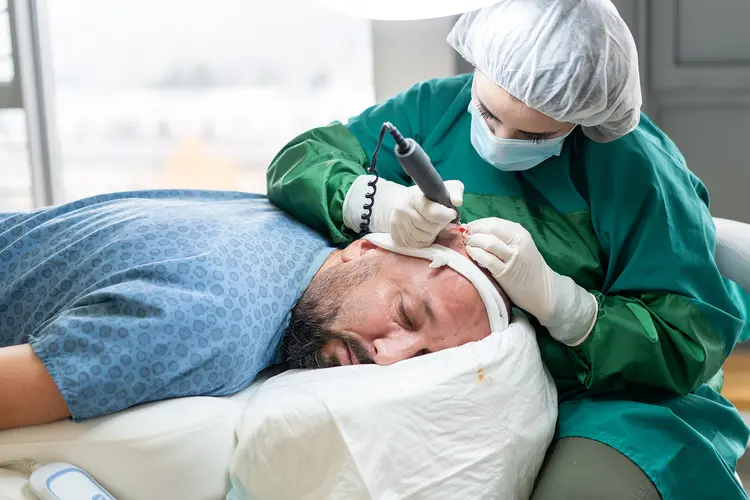
by laraibnaeem2005 | Sep 18, 2025 | Health
Sleep plays a crucial role in recovery after a hair transplant. Patients often wonder how to rest properly without disturbing the newly implanted follicles. Whether you had your Hair Transplant in Abu Dhabi (زراعة الشعر في ابوظبي) or opted for Hair Transplant in Dubai (زراعة الشعر في دبي), the first few nights are critical. Protecting the grafts during sleep ensures proper healing and long-lasting results. Many people also think about the investment involved, especially after considering the Cost of Hair Transplant in Dubai (تكلفة زراعة الشعر في دبي) or the Cost of Hair Transplant in the UAE (تكلفة زراعة الشعر في الامارات), making careful post-surgery care even more important.
What Is Treatment And How It Works?
A Hair Transplant in the UAE (زراعة الشعر في الامارات) involves harvesting follicles from donor regions and implanting them in thinning or balding areas. Advanced methods like FUE Hair Transplant in Abu Dhabi (زراعة الشعر بتقنية الاقتطاف في أبو ظبي) minimize scarring and promote natural-looking results. Over time, transplanted follicles establish themselves and begin to grow naturally. For better outcomes, supportive treatments such as PRP for Hair (prp للشعر) can accelerate healing. In some cases, patients seek alternatives like Eyelash Transplant (زراعة الرموش) or Micro Scalp Pigmentation (صبغ فروة الرأس المجهري) for different hair-related concerns. No matter which option is chosen, sleep positioning after surgery directly affects the survival of these fragile grafts.
Importance Of Sleep And Recovery Guidelines:
Sleep is more than rest—it’s when the body repairs itself. After a transplant, proper sleep posture prevents dislodging grafts and reduces swelling. Ignoring this crucial step can harm results, making it as important as the surgery itself.
Key Do’s For Sleeping After Hair Transplant
-
Sleep with your head elevated at a 30–45 degree angle.
-
Use extra pillows or a travel neck pillow to prevent rolling.
-
Keep the scalp area clean and avoid friction from bedding.
-
Stick to the recommended sleep position for at least 7–10 days.
Key Don’ts For Sleeping After Hair Transplant
-
Do not sleep flat on your back or stomach in the first week.
-
Avoid scratching the grafted area during sleep.
-
Do not use heavy blankets or tight caps that may touch the scalp.
-
Refrain from sleeping on the treated side until healing is stable.
Personal stories like My Hair Transplant Experience in Dubai (تجربتي في زراعة الشعر في دبي) often highlight how maintaining careful sleep posture makes a huge difference in recovery.
Types Of Hair Transplants And Sleep Adjustments:
Different transplant techniques may require slight variations in sleeping habits. For example:
-
Hair Transplant in Al Ain (زراعة الشعر في العين) and similar surgeries need elevated sleeping for faster recovery.
-
Patients who undergo Chest Hair (شعر صدر) or Men’s Chest Hair (شعر صدر رجال) transplants should avoid pressure on the chest during rest.
-
Procedures like SMP for Hair (smp للشعر) involve less sensitivity but still require careful sleep in the first few nights.
Since each transplant type has unique healing needs, following tailored instructions ensures the best outcome. Many also compare the Cost of Hair Transplant in Sharjah (تكلفة زراعة الشعر في الشارقة) or the general Cost of Hair Transplant (تكلفة زراعة الشعر), but proper sleep is what truly secures the value of the procedure.
Ideal Candidate And Choosing The Right Clinic:
Ideal candidates for hair transplants are those with healthy donor hair, realistic expectations, and commitment to aftercare. Whether opting for Hair Transplant in Abu Dhabi (زراعة الشعر في أبو ظبي) or anywhere else, patients should prioritize clinics that guide them not just during surgery but also in recovery. While many people compare the Cost of Hair Transplant in the UAE (تكلفة زراعة الشعر في الإمارات) across different regions, true success comes from receiving detailed post-operative instructions—including how to sleep safely after the procedure.
Risks, Benefits, And Common FAQs:
Risks If Sleep Care Is Ignored:
-
Graft displacement during the first few nights.
-
Prolonged swelling and discomfort.
-
Uneven hair growth or reduced graft survival.
Benefits Of Proper Sleep After Hair Transplant:
-
Faster healing process with minimal swelling.
-
Protection of delicate grafts for long-term survival.
-
Improved comfort and reduced risk of complications.
-
Better overall appearance and natural-looking results.
Common FAQs:
How long should I sleep upright?
Generally, 7–10 days is recommended, depending on healing progress.
Can I use a normal pillow?
Yes, but use soft pillowcases and extra support to prevent rolling.
When can I return to my normal sleeping position?
Usually after 10–14 days, once grafts are stable.
Does sleeping affect the final results?
Yes, careless sleep habits may damage grafts and compromise results.
Conclusion On Sleeping After Hair Transplant:
Sleeping the right way after surgery is one of the most important aftercare steps. Whether you had a Hair Transplant in Abu Dhabi (زراعة الشعر في ابوظبي), opted for advanced FUE Hair Transplant in Abu Dhabi (زراعة الشعر بتقنية الاقتطاف في أبو ظبي), or considered the overall Cost of Hair Transplant (تكلفة زراعة الشعر), your healing depends heavily on post-surgery care. Elevating your head, avoiding pressure, and maintaining patience during the recovery phase guarantee long-lasting, natural growth. Sleep may seem simple, but in reality, it is one of the strongest allies in ensuring a successful transplant journey.
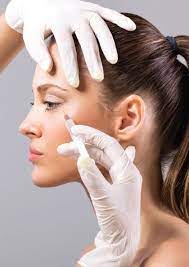
by laraibnaeem2005 | Sep 17, 2025 | Health
A frequently asked question among those considering Botox is, can I exercise after Botox injections? Since Botox has become a popular choice for reducing wrinkles and refreshing facial appearance, proper aftercare plays an essential role in achieving the best results. Exercise is a common part of many lifestyles, but certain activities immediately after treatment can interfere with how Botox settles. Knowing when and how to safely return to physical activity ensures smoother outcomes and longer-lasting benefits.
What Is Treatment And How It Works
Botox injections in Dubai(حقن البوتوكس في دبي) are a non-surgical cosmetic treatment that temporarily relaxes specific facial muscles responsible for fine lines and wrinkles. By blocking nerve signals that trigger excessive muscle movement, Botox softens expression lines such as crow’s feet, forehead wrinkles, and frown lines. The procedure is quick, often completed in minutes, with minimal discomfort and little to no downtime. Results typically last between three and six months, depending on individual metabolism and lifestyle. The effectiveness of Botox depends not only on the treatment itself but also on how well patients follow post-treatment care.
Importance Of Treatment:
The importance of Botox lies in both cosmetic and medical benefits. Cosmetically, it helps smooth wrinkles, prevent new lines from forming, and restore youthful skin, giving individuals a boost in confidence. Medically, Botox can also be used to treat migraines, muscle stiffness, and excessive sweating. However, achieving these benefits requires careful attention to aftercare. Exercise too soon after Botox can increase blood flow, raise the risk of bruising, and potentially cause the product to spread to unintended areas. This is why following proper guidelines about exercise after treatment is essential for safety and results.
Types Of Treatment:
Botox treatments vary depending on individual goals:
-
Cosmetic Botox: Focused on reducing facial wrinkles and creating smoother skin.
-
Preventive Botox: Used by younger individuals to delay early signs of aging.
-
Medical Botox: Applied in conditions like migraines or excessive sweating.
No matter the type, aftercare remains the same—knowing what activities to avoid, including intense exercise, ensures the Botox remains effective and safe.
Preparation And Aftercare:
Preparation before Botox involves avoiding alcohol, blood-thinning medications, and heavy skincare products. Aftercare, particularly regarding exercise, is critical. Here are some key guidelines:
-
Avoid strenuous exercise for at least 24 hours after Botox injections.
-
Skip activities that increase blood flow to the face, such as running, weightlifting, or hot yoga.
-
Light walking is usually acceptable, but avoid anything that raises body temperature significantly.
-
Stay upright for several hours after the procedure to allow the Botox to settle properly.
-
Avoid saunas, steam rooms, or hot showers immediately after treatment.
By following these steps, you reduce the chances of Botox spreading and maximize its effectiveness. Returning to your exercise routine too early may compromise results, so patience is key.
Ideal Candidate:
The ideal candidate for Botox is someone in good overall health, seeking to reduce wrinkles or prevent signs of aging. People who are active and exercise regularly can still enjoy Botox, but they must be willing to adjust their fitness routine for at least 24 hours post-treatment. Candidates should also have realistic expectations and be committed to following aftercare, including avoiding vigorous workouts immediately after the procedure. Those who are pregnant, breastfeeding, or have certain health conditions may not be suitable candidates.
How To Choose A Right Clinic?
Choosing the right clinic for Botox treatment ensures both safety and effectiveness. When making your decision, consider the following:
-
The clinic should maintain strict hygiene and safety standards.
-
Professionals should be trained and experienced in administering Botox.
-
Clear guidance about preparation and aftercare, including exercise restrictions, should be provided.
-
Reviews and client feedback can offer insights into treatment quality.
A good clinic will not only perform the injections safely but also help you understand how to protect your results afterward.
Risks:
While Botox injections(حقن البوتوكس) is generally safe, some risks can occur, especially if aftercare instructions are ignored. Exercising too soon after treatment may increase bruising, swelling, or cause the Botox to spread beyond the intended area. This could lead to uneven results or temporary muscle weakness in unintended regions. Other minor risks include redness, tenderness, or slight headaches. Most side effects are temporary, but following the recommended aftercare, particularly avoiding exercise, reduces these risks significantly.
Benefits:
The benefits of Botox are why it remains one of the most popular non-surgical treatments worldwide. These include:
-
Quick and convenient sessions with no lengthy recovery time.
-
Reduction in wrinkles and fine lines for a refreshed appearance.
-
Prevention of future wrinkles when used regularly.
-
Improved self-confidence and youthful skin.
-
Additional therapeutic uses beyond aesthetics.
To maximize these benefits, proper aftercare—including delaying exercise—is essential. By respecting the healing period, you ensure Botox delivers the smooth, natural results you desire.
Faqs:
Can I exercise after Botox injections?
It is recommended to avoid exercise for at least 24 hours after treatment.
Why is exercise not allowed after Botox?
Increased blood flow may spread the product to unintended areas, reducing effectiveness.
What kind of exercise can I do after Botox?
Gentle walking is usually fine, but avoid strenuous workouts.
When can I return to my normal fitness routine?
Most people can resume exercise after 24–48 hours.
Does exercise affect how long Botox lasts?
Excessive or early exercise may reduce the effectiveness, but once the Botox has settled, normal activity will not impact duration.
Conclusion:
So, can I exercise after Botox injections? The answer is yes—but only after waiting at least 24 hours. Strenuous activity too soon can compromise results by increasing bruising, swelling, or spreading the product. By following simple aftercare rules, such as avoiding workouts and heat exposure immediately after treatment, you allow Botox to work effectively and safely. With patience and proper care, you can return to your exercise routine while still enjoying the full benefits of smoother, younger-looking skin.
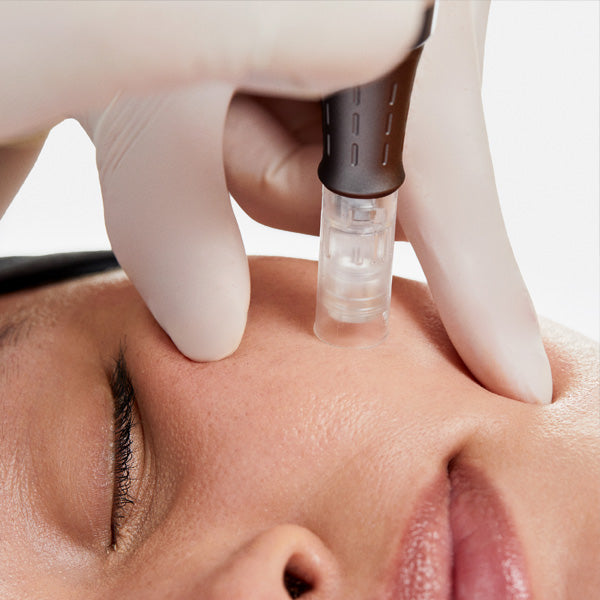
by laraibnaeem2005 | Sep 15, 2025 | Health
Uneven skin tone, pigmentation, and dark spots are common concerns that affect many individuals regardless of age or skin type. These issues often arise due to sun damage, hormonal changes, or acne scars, leaving behind visible marks that may be difficult to treat with creams alone. This is where Dermapen for hyperpigmentation and dark spots becomes an effective option. By stimulating natural healing and boosting collagen production, it offers noticeable improvement in overall skin tone.
What Is Treatment And How It Works?
Dermapen Treatment in Dubai(علاج ديرمابن في دبي) is a minimally invasive procedure that uses fine needles to create controlled micro-injuries in the skin. These microchannels trigger the body’s healing response, encouraging new collagen and elastin production. When targeting areas of hyperpigmentation and dark spots, this process helps break down uneven pigmentation and allows the skin to repair itself with healthier, more uniform cells. Over time, the treatment helps fade discoloration and enhances radiance.
Importance Of Treatment:
The importance of Dermapen for pigmentation lies in its ability to address discoloration at a deeper level. While topical products often treat only the skin’s surface, microneedling penetrates deeper layers, improving not only the appearance of dark spots but also overall skin texture. This makes it beneficial for those dealing with acne scars, melasma, age spots, or sun-induced pigmentation. For individuals seeking a non-surgical method with gradual yet long-lasting effects, Dermapen stands out as a practical solution.
Types Of Treatment:
There are various ways Dermapen microneedling for dark spots can be customized depending on skin needs:
-
Standard Dermapen sessions: Focus on stimulating collagen and improving pigmentation naturally.
-
Dermapen with serums: Active ingredients such as brightening agents may be infused into the skin for enhanced results.
-
Combination approaches: Dermapen can also be paired with other treatments to maximize skin lightening and evening out tone.
Each type is designed to gradually reduce pigmentation while maintaining the safety of the skin barrier.
Preparation And Aftercare:
To achieve the best outcomes from Dermapen treatment for hyperpigmentation, preparation and aftercare are essential. Before the session:
-
Avoid direct sunlight and tanning products.
-
Discontinue strong exfoliants, acids, or retinoids for a few days.
-
Keep skin hydrated and clean.
After the procedure:
-
Apply soothing creams or hydrating serums as recommended.
-
Always use sunscreen to protect against UV damage.
-
Avoid makeup, heavy workouts, and saunas for 24–48 hours.
-
Keep skin moisturized to support the healing process.
Following these guidelines enhances the results and reduces the risk of irritation or side effects.
Ideal Candidate:
The ideal candidate for Dermapen for dark spots is someone who experiences uneven skin tone caused by acne scars, sun exposure, or aging. It is suitable for a wide range of skin types and tones. However, people with active skin infections, uncontrolled acne, or severe medical skin conditions may not be suitable. Younger individuals with early signs of pigmentation as well as older individuals with long-term sun damage can both benefit from the treatment.
How To Choose A Right Clinic?
Selecting the right place for Dermapen microneedling plays a crucial role in achieving safe and noticeable results. Look for facilities that maintain high hygiene standards, use advanced equipment, and have experienced professionals. Reading reviews, checking before-and-after photos, and ensuring proper consultation before treatment can help in making an informed choice. A trusted clinic ensures safety and maximizes the benefits of hyperpigmentation reduction treatments.
Risks:
Though generally safe, there are some possible Dermapen Treatment(علاج ديرمابن) side effects to consider. Temporary redness, swelling, or sensitivity may occur in the treated area, typically subsiding within 24–48 hours. Rare complications may include bruising or infection if aftercare instructions are not followed. Choosing a qualified provider and adhering to guidelines minimizes these risks, making it a reliable solution for pigmentation concerns.
Benefits:
The benefits of Dermapen microneedling for hyperpigmentation and dark spots make it a preferred choice among many seeking clearer skin:
-
Reduction of pigmentation, sun spots, and acne marks
-
Improved skin texture and smoothness
-
Stimulation of collagen for long-term skin health
-
Even skin tone with a brighter complexion
-
Minimal downtime compared to invasive procedures
-
Safe for different skin types and tones
With repeated sessions, patients notice visible fading of dark patches, giving the skin a more youthful and uniform look.
Faqs:
Can Dermapen completely remove dark spots?
It may not erase them entirely but significantly reduces their visibility.
How many sessions are needed for hyperpigmentation?
Most people require 4–6 sessions for optimal results.
Is Dermapen safe for darker skin tones?
Yes, it is safe but settings may be adjusted for individual needs.
Does it work on melasma?
It can improve melasma, though results may vary and require consistent care.
Is there downtime after treatment?
Mild redness may occur, usually resolving within 1–2 days.
Conclusion:
For those asking, can Dermapen reduce hyperpigmentation and dark spots, the answer is yes—it is an effective solution that stimulates the skin’s natural healing to fade discoloration. By targeting deeper layers and boosting collagen, it delivers smoother, brighter, and more even-toned skin over time. With proper preparation, aftercare, and multiple sessions, Dermapen can significantly improve pigmentation issues. For individuals looking for a non-invasive yet powerful treatment, Dermapen for hyperpigmentation stands as one of the most reliable choices.





